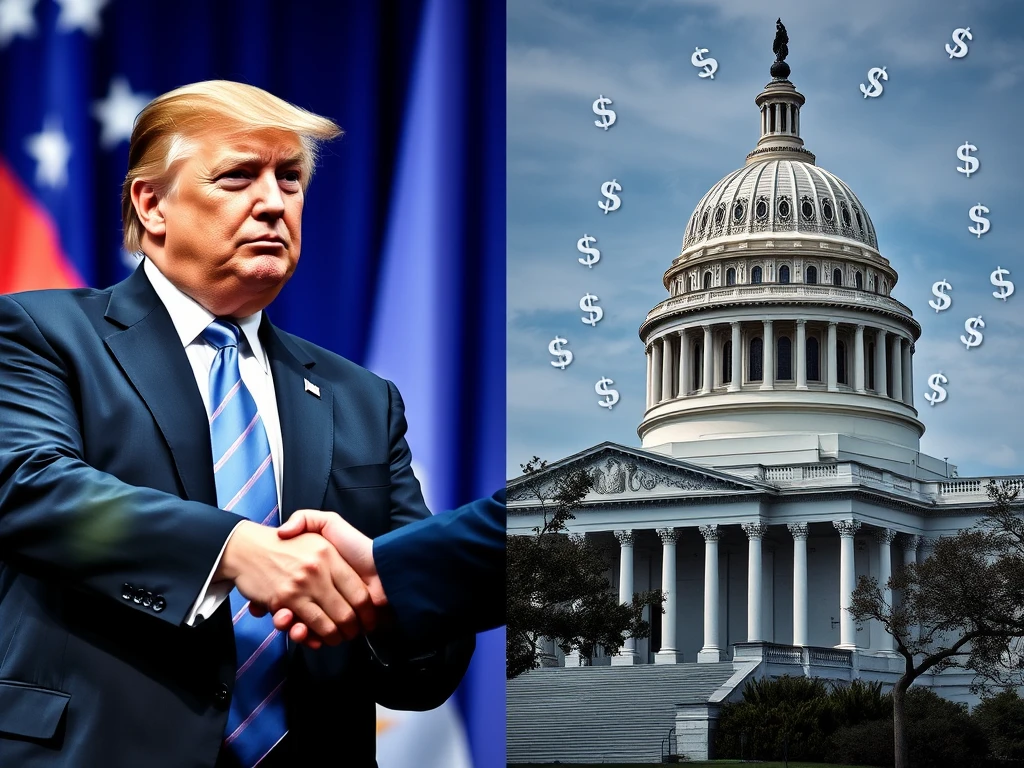Intriguing Trump Crypto Ventures Spark Debate on US Stablecoin Policy

The cryptocurrency world is buzzing as ventures linked to former US President Donald Trump are stepping into the stablecoin arena. The launch of USD1, a stablecoin associated with the Trump family, is creating ripples in Washington, potentially throwing a curveball into ongoing bipartisan efforts to establish clear US stablecoin policy. Is this a game-changer or a complication for crypto regulation in the United States? Let’s dive into the details.
Trump Crypto Ventures and the USD1 Stablecoin: A New Player
World Liberty Financial (WLFI), a crypto platform with ties to the Trump family, recently launched the World Liberty Financial USD (USD1) stablecoin. This move has ignited discussions and raised eyebrows in political circles, particularly concerning potential conflicts of interest. Despite the political noise, experts suggest that WLFI’s approach with USD1 aligns with current legislative thinking on stablecoin regulation.
- Backing & Audits: USD1’s planned structure emphasizes backing and regular audits, crucial for stablecoin credibility.
- Qualified Custody: Focus on secure custody solutions to protect user funds.
- Public Blockchains: Utilizing public blockchains for transparency and accessibility.
- No Native Yield: Avoiding inherent yield generation, aligning with regulatory preferences for payment-focused stablecoins.
Anastasija Plotnikova from Fideum points out that these elements are “well in line with the GENIUS and STABLE acts,” indicating a potential alignment with existing legislative frameworks. She argues this could be seen as a positive step, showing support for US-based crypto policy and stablecoins. However, the political context adds layers of complexity.
Navigating the Landscape of US Stablecoin Policy: GENIUS and STABLE Acts
Two significant bills are currently making their way through Congress, aiming to define the future of US stablecoin policy:
- The STABLE Act: Introduced in February, this act prioritizes transparency and consumer protection. It seeks to establish a clear regulatory pathway for dollar-pegged stablecoins, allowing issuers to choose between federal and state oversight. The core aim is to foster a secure and reliable stablecoin ecosystem.
- The GENIUS Act: This act, which recently cleared the Senate Banking Committee, focuses on collateralization guidelines for stablecoin issuers. It mandates full compliance with Anti-Money Laundering (AML) laws, ensuring stablecoins operate within legal and security parameters.
These acts represent bipartisan efforts to bring clarity and structure to the rapidly evolving stablecoin market. However, the entry of Trump crypto ventures into this space is introducing a new dynamic.
USD1: Throwing a Wrench into Bipartisan Efforts?
While some industry observers view the USD1 launch as a positive sign of growing crypto adoption, others are concerned about its potential to complicate legislative progress. The worry is that the involvement of Trump crypto ventures could politicize the issue, potentially hindering bipartisan cooperation on stablecoin regulation.
Dmitrij Radin from Fideum and Zekret suggests that USD1 could be “throwing a wrench into bipartisan efforts.” He highlights the conflict of interest concerns raised by figures like Senator Warren and Representative Himes, given the Trump family’s stake and revenue share in the venture. The concern is that any stablecoin legislation could be perceived as directly benefiting Trump, leading to hesitation or stricter, potentially less favorable, rules from lawmakers aiming for neutrality.
The potential outcome? Delays in passing crucial legislation or the imposition of overly restrictive rules designed to mitigate perceived political bias. This “political drama,” as Radin calls it, could inadvertently push crypto innovation offshore if regulators become overly cautious.
The Road Ahead for Stablecoin Regulation and Crypto Policy
Despite the political headwinds, the underlying sentiment is that stablecoins are on the cusp of mainstream adoption. However, the interplay between political dynamics and regulatory frameworks remains a critical factor. Banks and the Federal Reserve are still perceived as resistant to widespread stablecoin adoption, adding another layer of complexity to the crypto policy landscape.
Industry professionals are urging US lawmakers to prioritize regulatory clarity for stablecoins and crypto banking relationships. The focus, they argue, should be on establishing a solid foundation before shifting legislative attention to crypto tax laws. The balance between fostering innovation and ensuring regulatory oversight is delicate, especially with the added dimension of politically connected Trump crypto ventures entering the scene.
Conclusion: Navigating the Complexities of Crypto Policy
The emergence of USD1 and other Trump crypto ventures injects a fascinating, and potentially complicated, element into the ongoing debate about US stablecoin policy. While the technical design of USD1 appears to align with current regulatory thinking, the political implications are undeniable. Will this development accelerate or hinder the progress of stablecoin legislation? The coming months will be crucial in determining how these political and regulatory forces shape the future of stablecoins and the broader crypto ecosystem in the United States. One thing is clear: the intersection of crypto, politics, and regulation is becoming increasingly intricate, demanding careful navigation to unlock the full potential of digital currencies while safeguarding financial stability and consumer protection.







